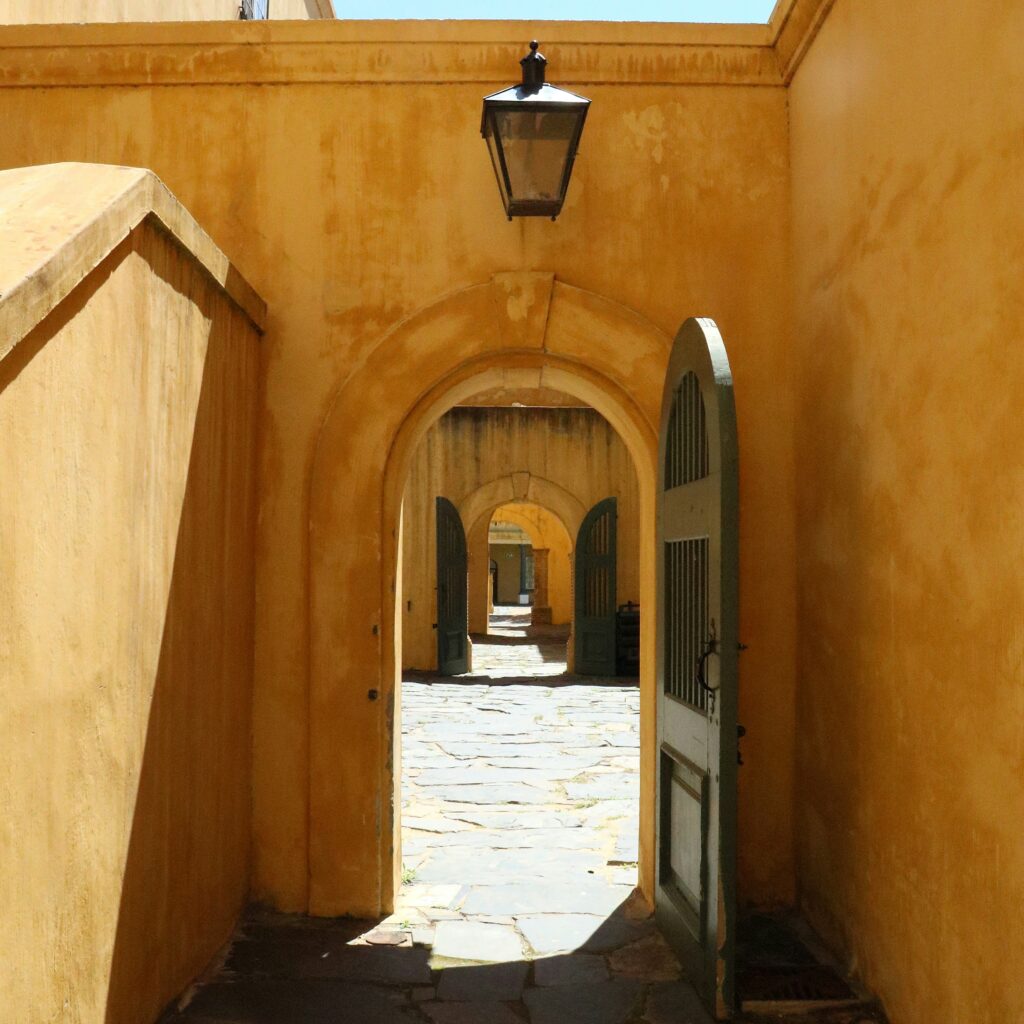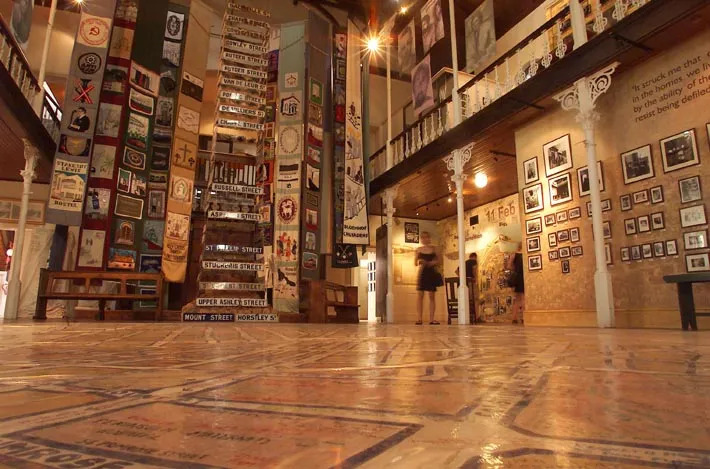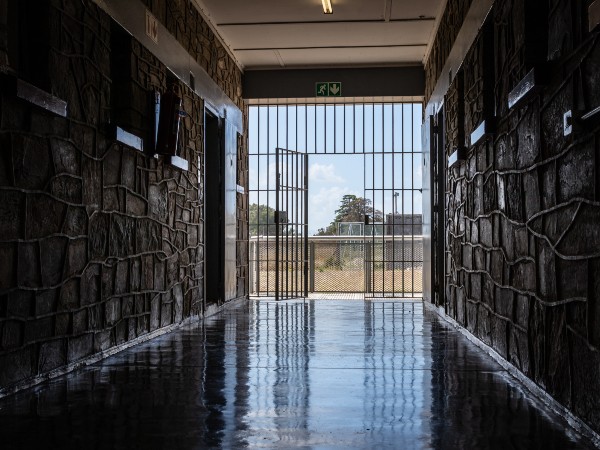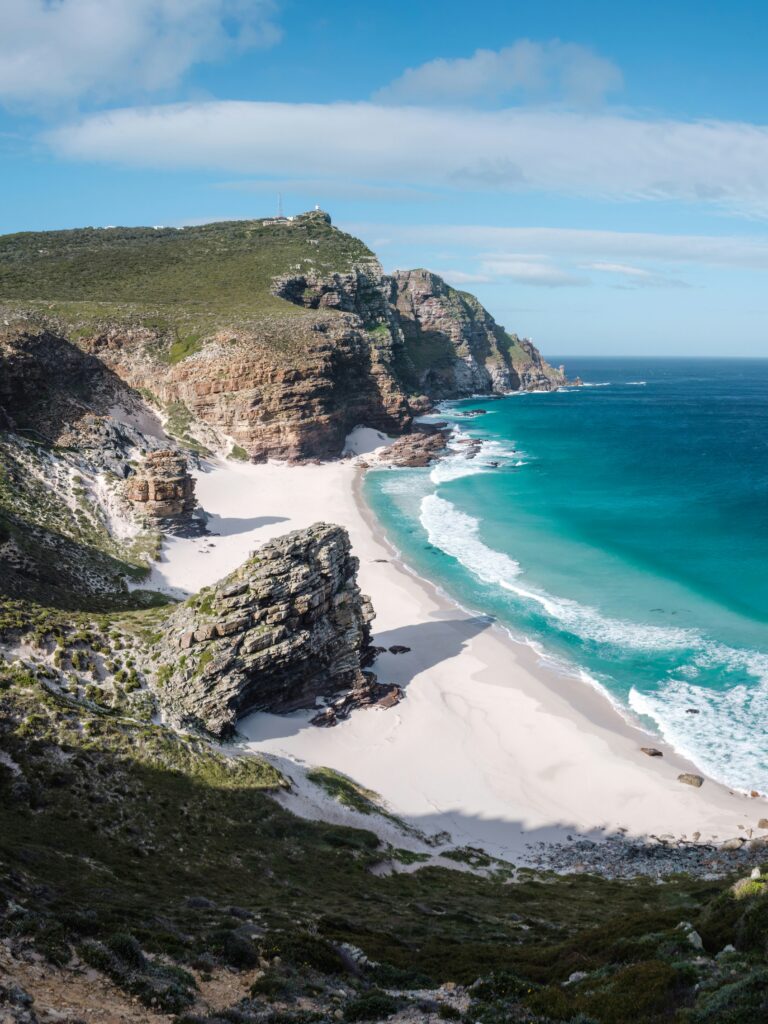Cape Town isn’t only famous for stunning beauty, world-class cuisine, and vibrant style. It’s a city rich in history, offering a fascinating glimpse into South Africa’s past. From colonial fortresses to poignant museums, the historical sites in Cape Town provide an opportunity to explore the stories and diverse cultural heritage of its people. Whether you’re a history buff or simply curious about the past, these four historical locations in Cape Town are must-visit destinations that will deepen your understanding of its people and the city’s enduring legacy.
1. Castle of Good Hope

The Castle of Good Hope is the oldest surviving colonial building in South Africa. Built by the Dutch East India Company between 1666 and 1679, this star-shaped fortress served as a replenishment station for ships travelling between Europe and the East.
Today, it stands as a testament to Cape Town’s colonial past and is home to several museums, including the Military Museum and the William Fehr Collection. The Military Museum showcases an impressive collection of weaponry, while the William Fehr Collection features art and furnishings from the 17th to 19th centuries, offering a glimpse into the colonial lifestyle.
Visitors can take guided tours to explore the Castle’s rich history, including its dungeons, old kitchens, and the well-preserved rooms that housed important colonial figures. The Castle often hosts historical reenactments and cultural events, making it a spot for both learning and entertainment. The daily Key Ceremony, a tradition dating back to the 17th century that is still held daily at 10 a.m, is a highlight not to be missed. Afterwards, for a small donation, you can even fire a cannon!
2. District 6 Museum

District Six was once a vibrant, multicultural community. But in 1966, during the height of Apartheid, it was declared a whites-only area and over 60,000 residents were forcibly removed. The District 6 Museum, located in a former Methodist church, is a poignant reminder of these forced removals and seeks to preserve the memories and stories of the displaced residents.
One of the most compelling features of the museum is its immersive exhibits, which include photographs, personal testimonies, and artefacts donated by former residents. The floor of the museum is covered with a large map of District Six, where ex-residents have marked their homes and shared their memories, creating a deeply personal and emotional experience for visitors.
Recently, the museum has introduced a VR experience that allows visitors to walk through the streets of District Six as it once was. This experience provides a unique perspective of the community’s past and the devastating impact of its destruction.
3. Robben Island

For nearly 400 years, the Robben Island was used as a place of banishment, isolation, and imprisonment. Most famously, it was here that Nelson Mandela was imprisoned for 18 of his 27 years in captivity during the apartheid era. Today, the island is a UNESCO World Heritage Site that stands as a symbol of perseverance and the triumph of the human spirit over adversity.
Tours to Robben Island depart from the V&A Waterfront and include a ferry ride to the island, followed by a guided tour led by former political prisoners. This insider’s perspective provides an authentic and powerful recounting of the island’s history and its role in the struggle for freedom and democracy in South Africa.
Visitors can explore the prison cells, including the one where Nelson Mandela was held, and other historical sites on the island, such as the lime quarry where prisoners were forced to work. The tour also includes a visit to the island’s small village, where the families of prison staff lived, providing a comprehensive view of life on Robben Island.
4. Cape of Good Hope

The Cape of Good Hope, often mistakenly thought to be the southernmost tip of Africa, is actually the southwesternmost point of the continent. This iconic landmark played an important role in maritime history as a significant navigational landmark for early explorers. It is part of the Table Mountain National Park and offers some of the most breathtaking views in Cape Town.
The area is known for its rugged cliffs, lush vegetation, and diverse wildlife, including baboons, antelope, and plenty of bird species. One of the main attractions at the Cape of Good Hope is the Cape Point Lighthouse, which provides panoramic views of the Atlantic Ocean and the surrounding landscape. The lighthouse can be reached by a funicular ride or a scenic hike, both offering stunning views along the way.
Hiking enthusiasts will find several trails to explore, ranging from easy walks to more challenging routes along the dramatic coastline. The Cape of Good Hope also boasts beautiful beaches and picnic spots, making it a perfect destination for a day trip filled with outdoor adventure and natural beauty.
Conclusion
Cape Town’s historical sites offer a captivating journey through time, revealing the city’s rich cultural heritage and the resilience of its people. Whether you’re exploring the formidable Castle of Good Hope, delving into the poignant history of District Six, visiting the symbolic Robben Island, or taking in the stunning scenery at the Cape of Good Hope, each location provides a unique and enriching experience. After a day of exploration, return to the O’Two Hotel to relax in luxurious comfort. Take advantage of special offers, enjoy the rooftop pool, or indulge in a spa treatment. Your journey through Cape Town’s history awaits!



